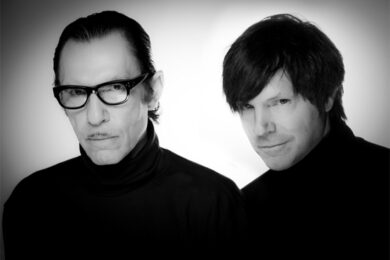It’s hard to shake off a feeling that one of the reasons broken beat hasn’t been given its critical due – certainly in comparison to other sides of the London soundsystem music continuum – is that journalists, and I include myself in this of course, are dorks. Broken beat, on the other hand, was always notable for being the province of sophisticated party people, people who very much walked the walk when it came to fashion, dance moves and committed involvement with nightlife, as well as deep rooted musical knowledge and musicianship. It’s easy to feel awkward and clumsy in a “bruk” dance, and I reckon that might be a significant part of why, despite being innovative, prolific and capable of rocking Carnival crowds and underground clubs alike, it’s not been written into the documentation of British lineages in the same way other styles have.
Received wisdom goes that the sound and tight-knit scene existed for a limited time from the late 90s to early 00s, centred around Goya Distribution in West London and the Co-Op club at Plastic People, then petered out with just occasional revivals and comebacks. But this misses the fact that the intensely hybrid quality of the music meant that it was always deeply connected into the fabric of things around it, and remains so now. It was certainly an intense fusion – of soundsystem oomph, jazz-dance intricacy, Afrobeat intensity, all with a Detroit techno futuristic vision to boot – but it brought in more besides. All through of its peak era, people from the worlds of soulful house (the late Phil Asher), UK garage (Zed Bias, particularly in his Phuturistix guise), experimental electronica (Mark Pritchard, Tony ‘Moody Boyz’ Thorpe) all had one foot in Co-Op, and the jungle/drum ’n’bass link was so total you’d be hard pressed to find a broken beat mainstay who hadn’t released on 4Hero’s pivotal Reinforced label.
The link is less direct, but you can even hear bruk in the more musicianly / funky early iterations of grime – think Terror Danjah, DaVinChe, Mizz Beats, early Scratcha: all at the very least swimming in the same melange of soundsystem music, soul, funk and electronics. And grime’s more funtimes little sibling UK funky practically was a rawer, rougher take on bruk: indeed one of the first pioneers of funky, Apple, listed his genre on MySpace as “broken beat”, and broken beat scene renegade Altered Natives produced an early key funky anthem in ‘Rass Out’. Most of all, though, broken beat overlapped with the much broader, genre-agnostic, soul-jazz based, “Gilles Peterson world”. Many of the scene players are jazz instrumentalists and/or scholars of jazz and close links span out through other nights at Plastic People (where residents including Floating Points, Josey Rebelle, Four Tet, Theo Parrish and founder Ade Fakile absorbed broken beat into their various personal flows) and other lynchpin club nights from Tokyo to Todmorden.
The fact that the soul-jazz continuum ran right through the centre of the broken beat scene also meant it was full of songs and singers: some of the greatest singers in the world in fact, including the likes of Eska, Valerie Etienne, Bembe Segue, Mpho Skeef and many more. (Props here to DJ and musician Sophie Callis for recently providing a roll-call of women in broken beat, further deconstructing the myth that it was a boys’ club closed shop.) And that has helped its continued influence run not just through underground scenes but through the longer, deeper streams of song-form genres, right up to the current ultra-fertile UK soul revival of recent years: the sounds of Cleo Sol, Jorja Smith, Children Of Zeus, Jaz Karis and all the rest emerge from a British lineage which has broken beat woven into its very nature.
On top of all that, while occasionally there is an actual official scene revival – a Back-to-Co-Op night or takeover …


















